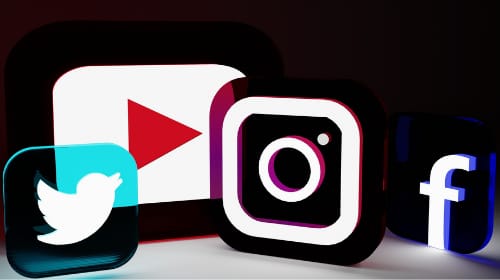Where does paid social media fit into your overall marketing strategy?
What channels (aka, social media platforms) should you consider?
How can you be efficient with dollars put towards paid ad spend?
The truth is that there isn’t a “right” social platform — it all depends on how effective you activate on these channels based on their actual capabilities. While there is an abundance of social advertising platforms we could dive into, let’s focus on the three major social media advertising channels dominating the space: Twitter, LinkedIn and Facebook.
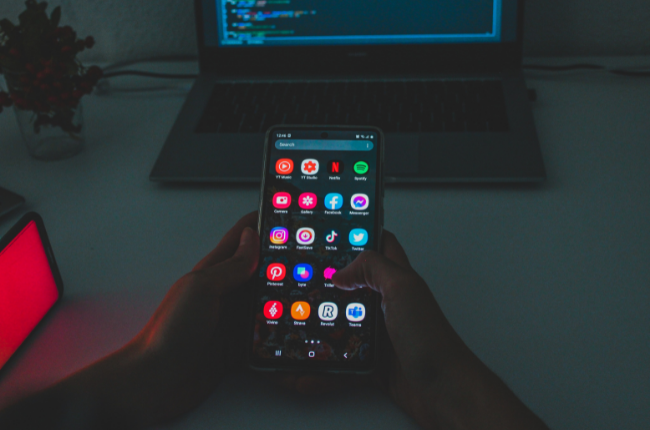
Related: Leveraging Paid Social for Brand Recovery
Participate in the Conversation With Twitter
When it comes to organic social media strategy, Twitter is where the real-time conversations are happening amongst the most active users on social. When it comes to digital marketing, Twitter marketing can be most effectively used when targeting conversations, specifically users actively tweeting around topics, hashtags or people you’re hoping to engage with.
Objective
Within the ads manager, Twitter has eight different campaign objectives to choose from. In thinking through your social media strategy, Twitter ads are best used to spread brand awareness and are not optimal for conversion-based campaigns like generating leads.
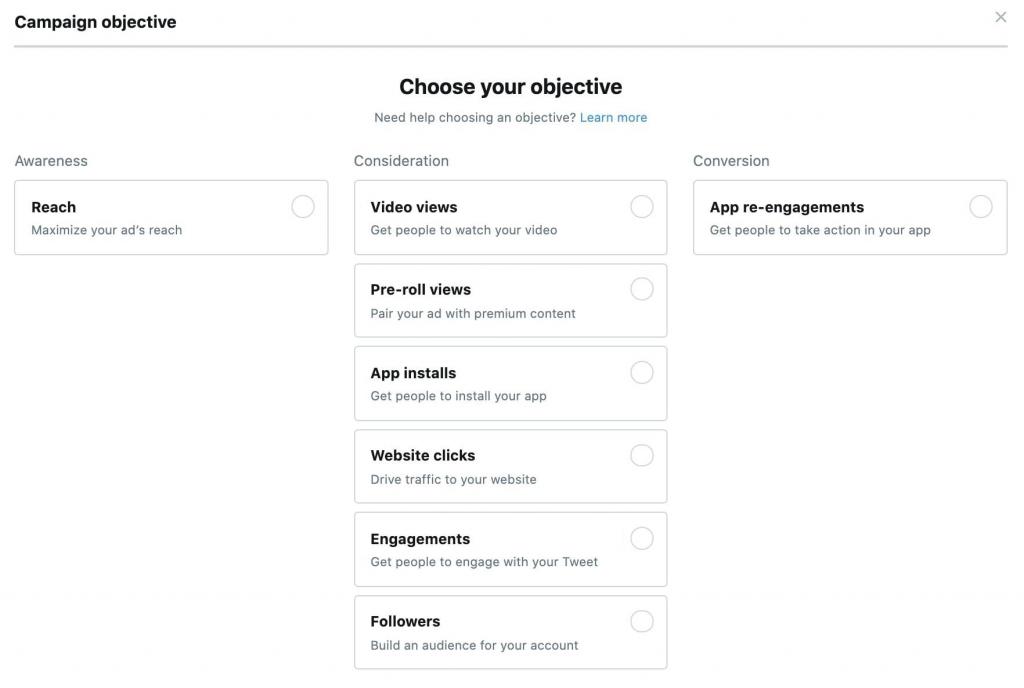
Targeting
From a broader ads manager perspective, Twitter is different than the other two paid social media marketing platforms in its ability to target keywords (think #KaytlynIsAwesome or “Kaytlyn is Awesome”) and follower lookalikes, which targets followers that look like the followers of a handle but not the handle’s exact followers. Other capabilities include custom list uploads, retargeting and interest-based targeting.
This type of targeting has its pros and cons. One of the biggest pros to using this platform is the ability to cast a wider net to users that could engage with your brand. This can also be the biggest con to consider when thinking through your paid social media strategy, including paid social ads — who ARE you really reaching with these broad targeting parameters and are they in the audience you’re hoping to reach?
Cost
From a marketing cost perspective, Twitter typically costs less depending on how you target users. The more niche your audience is, the more expensive your paid social media cost per action will be.
TLDR: To use Twitter paid ads effectively, consider awareness-based campaigns that target users actively participating in conversations your brand wants to reach.

Related: A Complete Guide to LinkedIn Message Ads
LinkedIn: Proficient in Professionals
When the world comes to network, you’ll find them on LinkedIn, of course! It’s no surprise that LinkedIn is the best channel to reach industry professionals and most effective in B2B social media advertising.
Objective
LinkedIn offers seven social advertising campaign objectives when setting up a campaign in the ads manager. Compared to Twitter, LinkedIn is best used for prompting your audience take some type of action, whether that’s compiling job applicants or filling out a form.
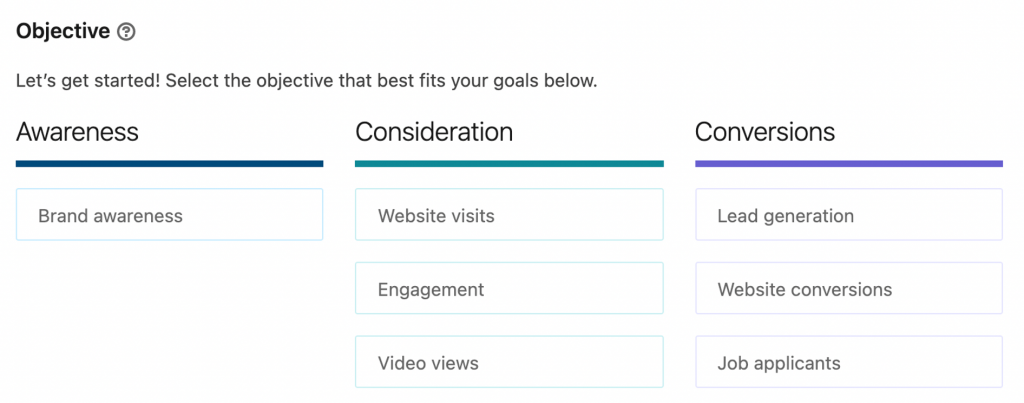
Targeting
When it comes to LinkedIn targeting, you can customize your target audience on the platform by using a combination of custom audiences (like list uploads) or audience attributes (like job titles or demographics).
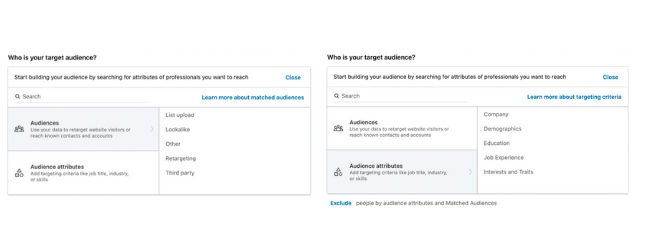
Easily one of the best features of LinkedIn ads manager is the ability to layer targeting to reach exactly who you want by using the ‘AND’ or ‘OR’ features.
For example, if you wanted to target people who are Digital Marketing Specialists or have some type of paid social media advertising skills, you simply layer the ‘OR’ feature into your targeting. This will allow you to reach people that have Digital Marketing Specialist as a job title and users who may have the skills you’re looking for.

But what if you’re trying to reach Digital Marketing Specialists WITH paid social media advertising experience? Flip on the ‘AND’ button.

LinkedIn allows brands to zero in on the exact people they want to target. Brands can effectively create a thoughtful audience with paid social ads by finding the right combination of user attributes and custom lists.
Cost
With its super niche targeting capabilities, LinkedIn is likely the most expensive social media channel to use out of the three, especially when it comes to conversion-based campaigns. The silver lining to the cost of the campaign is that your brand is truly targeting the people you want to see your content with social media ads.
TLDR: Although leaning towards the more expensive side, consider incorporating LinkedIn advertising into your B2B digital marketing strategy when trying to reach professionals.

Related: Facebook Ads vs. Google Ads
Reach Customers That Take Action on Facebook
Let this serve as a reminder that there are around 2.85 billion users on Facebook. These people can range from grandparents, teachers, healthcare professionals, your friends, my friends and even the person you met on BART. With that in mind, Facebook has no limits to who you can reach on the platform, which is why it serves as a great channel to use to engage customers.
Objective
Out of the three platforms, Facebook offers a variety of campaign objectives in the ads manager based on the type of campaign you’re hoping to run: auction or reach. Given its wide base of users, Facebook is a great platform to test and learn about the audiences you want to act on your content.
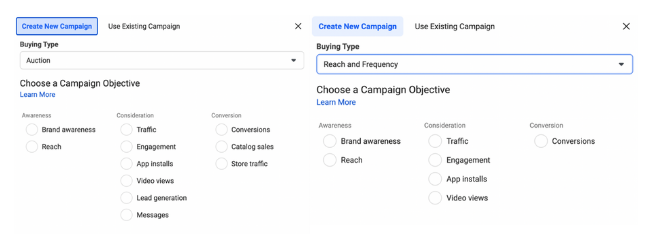
Targeting
Facebook advertising has robust targeting capabilities, which gives brands the ability to reach its core audiences or even just a few specific people. Within the ads manager, you can define your audience by specific locations, demographics, interests, connections to the brand page or behavior. Like Twitter and LinkedIn, you can target custom audiences through contact lists, app users or even site visitors.
If you want to get to specific people on the platform, Facebook allows you to use a tool called pixel retargeting, where you can create audiences entirely based on people who’ve already taken some action with your brand, like visiting your website. While this pixel needs to be embedded on your landing pages, it’s well worth the time spent since it will allow your organization to retarget and re-engage with customers that have touched your brand in some way. You can even create an entire lookalike audience of people who “look like” the people that have visited your website. Once you reach these people, you can also set up the paid campaign so these groups are served entirely different ads.
Between raising brand awareness by targeting new and existing users, Facebook targeting is super helpful in segmenting out your audiences so that your content does not overlap with one another. This type of targeting strategy can be effective in reaching customers most likely to engage with your brand.
Cost
Facebook cost for a paid social strategy is extremely tricky – cost per action depends on who you’re trying to reach on the platform and what action you hope they take. Like the other channels, the narrower your campaign gets, the more it will likely cost to reach your audience.
TLDR: With billions of users amongst different demographics on the platform, Facebook can be a useful channel in reaching new customers and engaging with existing ones.
With all this backend knowledge in mind, there isn’t a one-size-fits-all approach to choosing the right platform for your paid social strategy. These platforms can be molded to suit your brand’s marketing needs if you understand the output it will generate for your overall goals.
When thinking about your social media marketing strategy (including social media ads) for the rest of the year, think about who you want to reach. Are they professionals in an industry space? Are they customers you want to purchase something for your brand? Do you want users to read a cool new blog on your brand’s website? Once you understand who your audience is, use it as a north star to guide what platforms you should activate on to be successful.
Need help getting your paid social campaigns off the ground? Check out our social media marketing services and let’s talk!



